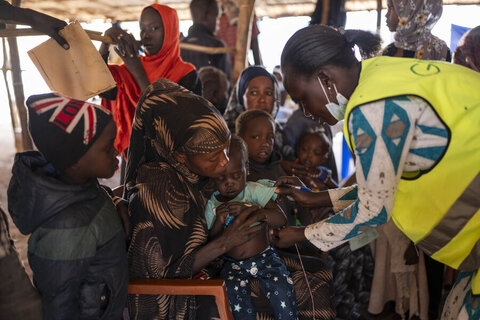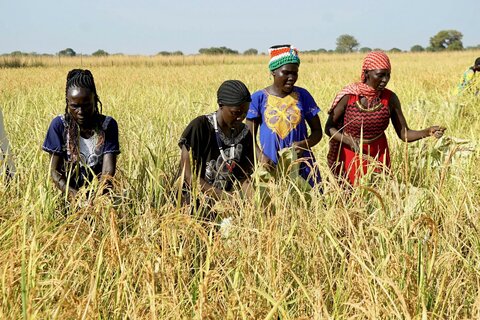Six things worth knowing about South Sudan’s food crisis in 2019

A record number of people — 6.9 million or more than 60 percent of South Sudan's entire population — do not know where their next meal will come from as hunger peaks during the lean season from May to July. This is one of the main findings of an Integrated Food Security Phase Classification (IPC) report in June.
The height of the lean season coincides with the rainy season cutting access for both humanitarian agencies and traders by land to many communities.
The IPC offers a set of standardized measures to determine the severity and magnitude of food insecurity. This is the first time the number of people in need has risen so sharply since the start of IPC analysis in South Sudan in 2007.
WFP response
All indications are that greater numbers of people will need life-saving humanitarian assistance in 2019 to stop increased suffering. The World Food Programme (WFP) is ramping up its response to reach up to 5.1 million people this year with urgent emergency support. WFP assistance will also be used to help people strengthen their resilience against future shocks.
So far this year, WFP pre-positioned 173,000 metric tons of food in more than 60 areas before the start of the rains. This is 66,000 metric tons more than at the same time in 2018 — reaching a record 98 percent of the pre-positioning target.
Getting food to the right place at the right time not only helps to save lives but also reduces delivery costs because WFP can get more food in by road, which cuts the need for costly airdrops. Airdrops are a last resort to reach areas that are completely cut off by land during the rains, which end in November.

Here is what you need to know about South Sudan's food security situation:
1. The country is facing unprecedented levels of food insecurity because the compounded long-term impact of man-made conflict since 2013 — in addition economic stagnation — continue to destroy people's lives and livelihoods.
2. The food crisis also deepens because of poor harvests, the displacement of millions of people within and outside the country, delayed rainfall, drought conditions over much of East Africa and the Horn and years of people losing all their assets.
3. The number of people facing acute food insecurity is increasing every year. Compared to all previous lean seasons when hunger peaks annually, the current one has the highest proportion of the population — 16 percent or 1.82 million — facing "Emergency" (IPC Phase 4) levels of acute food insecurity.
4. The number of people experiencing "Emergency" (IPC Phase 4) acute food insecurity and facing "Crisis" (IPC Phase 3) acute food insecurity in South Sudan during the May to July lean season has grown every year since 2013.
5. The IPC update estimates that as many as 21,000 people — particularly in the worst-hit regions of Jonglei, Lakes and Upper Nile — will face famine-like conditions at the height of the lean season in July. Without receiving immediate food assistance, their lives would only deteriorate even more.
6. Humanitarian assistance alone cannot solve the problems in South Sudan. Only a political solution can provide the lasting peace that is needed for families to rebuild their lives and livelihoods after so many years of decline.

Donors are key
With support from donors such as the African Development Bank, United States, United Kingdom, Germany, European Union, Canada and Japan, WFP provides various kinds of assistance: life-saving emergency food supplies, food in return for work to construct and rehabilitate community assets, food for school meals, and special products for the prevention and treatment of moderate acute malnutrition among children and pregnant and nursing women.


